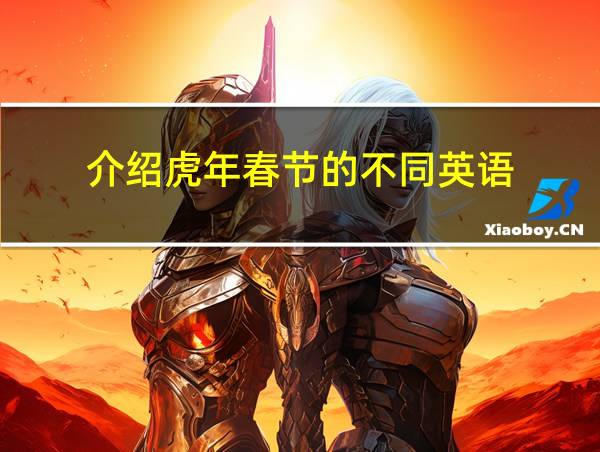介绍虎年春节的不同英语

The New Year season in China lasts for fifteen days. The first week is the most important and widely celebrated time. Throughout this period, various customs and traditions are followed, and people indulge in festivity and excitement.
春节的食物-中国年夜饭
One of the most significant aspects of the Spring Festival is the traditional food that is prepared and enjoyed during this time. The reunion dinner, also known as \"年夜饭 (nián yè fàn)\" or the Chinese New Year\'s Eve dinner, holds a special place in the hearts of Chinese people. This sumptuous feast is a time when families come together to share a meal and bond. It is a symbol of unity and prosperity, as well as an opportunity to express gratitude for the blessings of the past year.
The variety of dishes served during the reunion dinner is extensive, with each dish carrying its own symbolic meaning. For example, fish symbolizes abundance and prosperity, while dumplings represent wealth and good fortune. Noodles are associated with longevity, and sticky rice cakes (nian gao) symbolize a higher income or position in the coming year.
Chinese New Year\'s Eve dinner not only satisfies the taste buds but also brings families closer together. It is a time for laughter, storytelling, and creating lasting memories. The aroma of the dishes fills the house, and the sound of joyful conversations and laughter reverberates in the air.
中国春节的传统习俗-放鞭炮和舞龙舞狮
Aside from the delicious food, there are several traditional customs associated with the Chinese New Year that add color and excitement to the festivities. One of the most well-known traditions is setting off firecrackers and fireworks. It is believed that the loud noise scares away evil spirits and brings good luck and fortune for the upcoming year.
Another iconic tradition is the dragon and lion dance. These performances are vibrant and energetic, featuring a team of dancers dressed as dragons or lions, accompanied by the rhythmic beats of drums and gongs. The dancers perform intricate movements, representing power, prosperity, and good fortune.
These customs not only entertain people but also have deep cultural significance. They reflect the ancient traditions and beliefs of the Chinese people while invoking a sense of joy and unity among the community.
春节的象征与祝福-新春红包
One of the most eagerly anticipated aspects of the Spring Festival for children is receiving red envelopes, known as \"红包 (hóng bāo),\" which contain money. This tradition symbolizes good luck, prosperity, and blessings for the coming year. The red color of the envelope is considered auspicious and is believed to ward off evil spirits.
The exchange of red envelopes is a gesture of love, respect, and good wishes, particularly from elders to younger family members. It is not only a celebration of the new year but also a way of teaching younger generations about values such as gratitude and filial piety.
结语
The Chinese Spring Festival is a time filled with warmth, joy, and traditions that have been passed down through generations. It is a time to appreciate family, reunite with loved ones, and embrace the hope and excitement of a new beginning.
As we immerse ourselves in the festivities of the Spring Festival, let us take a moment to reflect on the rich cultural heritage and profound symbolism that underlies these celebrations. May the traditions and customs of the Chinese New Year continue to bring happiness, prosperity, and blessings to all.



